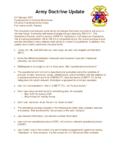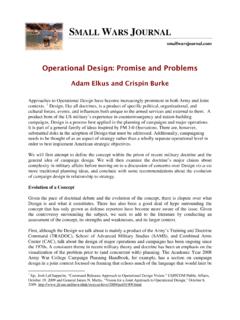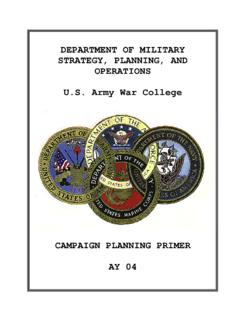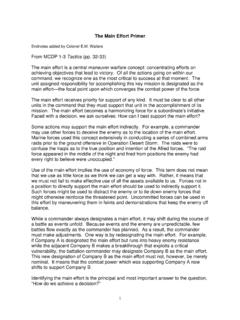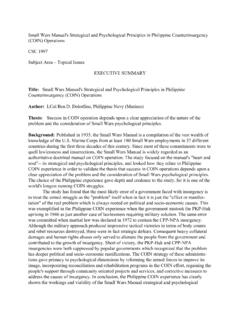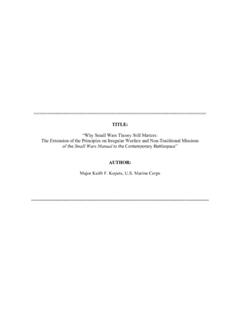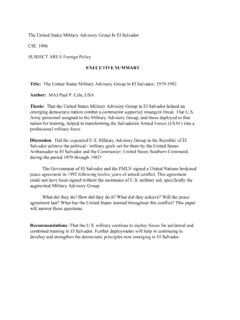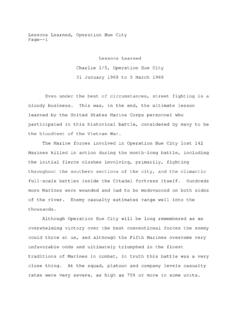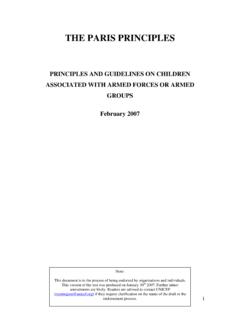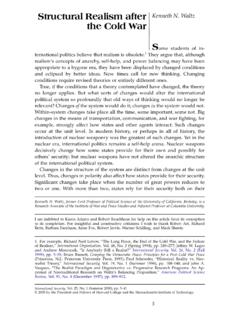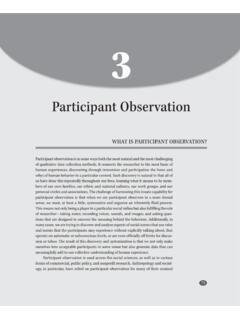Transcription of Hybrid Warfare and Challenges - Small Wars Journal
1 34 JFQ / issue 52, 1st quarter 2009 Warfare and ChallengesBy FRaNk G. hoFFMaNLieutenant colonel Frank G. hoffman, usMcr (ret.), is a research Fellow in the center for emerging threats and opportunities at the Marine corps combat Development military faces an era of enormous complexity. This complexity has been extended by globalization, the proliferation of advanced technology, violent transnational extremists, and resurgent powers. America s vaunted military might stand atop all others but is tested in many ways. Trying to under-stand the possible perturbations the future poses to our interests is a daunting challenge.
2 But, as usual, a familiarity with history is our best aid to interpretation. In particular, that great and timeless illuminator of conflict, chance, and human nature Thucydides is as relevant and revealing as his classic history, Thucydides detailed the savage 27-year conflict between Sparta and Athens. Sparta was the overwhelm-ing land power of its day, and its hoplites were drilled to perfection. The Athenians, led by Pericles, were the supreme maritime power, supported by a walled capital, a fleet of powerful triremes, and tributary allies. The Spartan leader, Archidamius, warned his kinsmen about Athens relative power, but the Spartans and their supporters would not heed their king.
3 In 431 BCE, the Spartans marched through Attica and ravaged the Athenian country estates and surrounding farms. They encamped and awaited the Athenian heralds and army for what they hoped would be a decisive battle and a short scarlet-clad Spartans learned the first lesson of military history the enemy gets a vote. The Athenians elected to remain behind their walls and fight a protracted campaign that played to their strengths and worked against their enemies. Thucydides ponderous tome on the carnage of the Pelo-ponnesian War is an extended history of the operational adaptation of each side as they strove to gain a sustainable advantage over their enemy.
4 These key lessons are, as he intended, a valuable possession for all time. In the midst of an ongoing inter-Service roles and missions review, and an upcom-ing defense review, these lessons need to be underlined. As we begin to debate the scale and shape of the Armed Forces, an acute appreciation of history s hard-earned lessons will remain useful. Tomorrow s enemies will still get a vote, and they will remain as cunning and elusive as today s foes. They may be more lethal and more implacable. We should plan should normally eschew simplistic metanarratives, especially in dynamic and nonlinear times. However, the evolving char-acter of conflict that we currently face is best characterized by convergence.
5 This includes the convergence of the physical and psychological, the kinetic and nonkinetic, and combatants and noncombatants. So, too, we see the con-vergence of military force and the interagency community, of states and nonstate actors , and of the capabilities they are armed with. Of greatest relevance are the converging modes of war. What once might have been distinct operational types or categorizations among terrorism and conventional, criminal, and irregular Warfare have less utility Strategic ThinkingThe 2005 National Defense Strategy (NDS) was noteworthy for its expanded under-standing of modern threats. Instead of the his-Above: corinthian helmet, circa 500 bceLeft: colonel John s.
6 Mosby, , the Gray Ghost Library of Congress (Brady-Handy Photograph Collection)Matthias issue 52, 1st quarter 2009 / JFQ 35 HOFFMAN torical emphasis on conventional state-based threats, the strategy defined a broadening range of Challenges including traditional, irregular, terrorist, and disruptive threats. The strategy outlined the relative probability of these threats and acknowledged America s increased vulner-ability to less conventional methods of conflict. The strategy even noted that the Department of Defense (DOD) was over invested in the traditional mode of Warfare and needed to shift resources and attention to other civil and intrastate conflicts have always had a higher frequency, their strategic impact and operational effects had little impact on Western military forces, and especially forces, which focused on the significantly more challenging nature of state-based threats and high-intensity conventional warfighting.
7 This focus is partly responsible for America s overwhelming military superiority today, measured in terms of conventional capability and its ability to project power globally. This investment priority and American force capa-bilities will have to change, however, as new environmental conditions influence both the frequency and character of to the strategy s articulation, a number of and foreign analysts compli-mented DOD strategists for moving beyond a myopic preoccupation with conventional war. But these analysts have also identified an increased blurring of war forms, rather than the conveniently distinct categorizations found in the NDS.
8 Yet the strategy itself did suggest that the most complex challengers of the future could seek synergies from the simultaneous application of multiple modes of war. The NDS explicitly admitted that the challenger catego-ries could and would overlap and that recent experience indicates .. the most dangerous circumstances arise when we face a complex of Challenges . Finally, in the future, the most capable opponents may seek to combine truly disruptive capacity with traditional, irregular, or catastrophic forms of Warfare . 2 This matches the views of many military analysts, who have suggested that future con-flict will be multi-modal or multi-variant rather than a simple black or white characterization of one form of Warfare .
9 Thus, many analysts are calling for greater attention to more blurring and blending of war forms in combinations of increasing frequency and lethality. This construct is most frequently described as Hybrid Warfare , in which the adversary will most likely present unique combinational or Hybrid threats specifically targeting vulner-abilities. Instead of separate challengers with fundamentally different approaches (conven-tional, irregular, or terrorist), we can expect to face competitors who will employ all forms of war and tactics, perhaps simultaneously. Criminal activity may also be considered part of this problem, as it either further destabilizes local government or abets the insurgent or irregular warrior by providing resources.
10 This could involve smuggling, narcoterrorism, illicit transfers of advanced munitions or weapons, or the exploitation of urban gang number of analysts have highlighted this blurring of lines between modes of war. They suggest that our greatest challenge in the future will not come from a state that selects one approach but from states or groups that select from the whole menu of tactics and tech-nologies and blend them in innovative ways to meet their own strategic culture, geography, and aims. As Michael Evans of the Australian Defence Academy wrote well before the last Quadrennial Defense Review, The possibil-ity of continuous sporadic armed conflict, its engagements blurred together in time and the 2005 National Defense Strategy was noteworthy for its expanded understanding of modern threats101st Airborne Division soldiers fire missile at building in Mosul, Iraq, in which uday and Qusay hussein barricaded themselves, July Army (Curtis G.)
